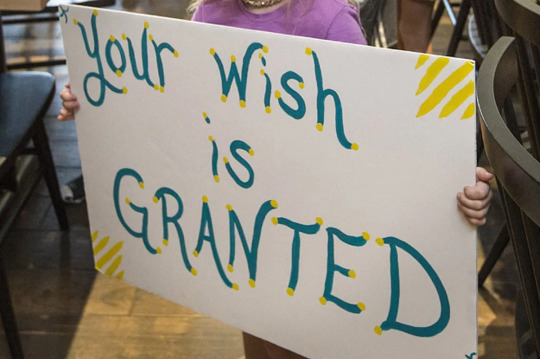#HIV Cure Research
Text

HIV/AIDs Research and Treatment Breakthroughs
Explore the latest breakthroughs in HIV/AIDS research and treatment, that have the potential to reshape the landscape of HIV/AIDS management.
#"HIV/AIDS Research and Treatment#HIV Care#HIV Cure Research#Antiretroviral therapies#current research on HIV/AIDS#CME Programs#CME Conferences#CME Medical courses#CME credits#doctor conferences#medical CME#Primary Care Conference#Medical CME Online#Emergency Medicine Online CME#Medical Conference Website#Physician Conferences#Medical CME Courses#Doctors CME Conferences#CME training for Physicians#Medical Event Organizer#Organizing Medical Events#Medical Conferences#Medical Speakers#Healthcare Marketplace
1 note
·
View note
Text
"The “Düsseldorf Patient”, a man now aged 53, is just the third person worldwide to have been completely cured of HIV via stem cell transplantation.
As in the case of the other two patients, the so-called “Berlin Patient” and “London Patient,” the transplantation was undertaken to treat an acute blood disease, which had developed in addition to the HIV infection.
The Düsseldorf Patient received a stem cell transplant used to treat leukemia in 2013 and has shown persistent suppression of HIV-1 ever since, including during the last 4 years after the patient stopped taking anti-retroviral medication.
“I still remember very well the sentence from my family doctor: ‘don’t take it so hard,'” the Düsseldorf Patient, who had leukemia as well as HIV-1, said in a statement. “‘We will experience together that HIV can be cured!’ At the time, I dismissed the statement.”
Allogeneic hematopoietic stem cell transplantation (HSCT) is a procedure used to treat certain cancers, such as leukemia, by transferring immature blood cells from a donor to repopulate the bone marrow of the recipient.
Scientists now understand that individuals with two copies of the Δ32 mutation in the gene for the HIV-1 co-receptor CCR5; are resistant to HIV-1 infection. The two previous cases of both the London patient and the Berlin patient involved receiving a stem cell transplant from a donor with these unique mutations.
Björn-Erik Jensen, a specialist in infectious diseases at Düsseldorf University Hospital, lead the treatment and subsequent research, revealed today in a peer-reviewed study in Nature.
The patient was diagnosed as having acute myeloid leukemia and proceeded to undergo transplantation of stem cells from a female donor in 2013, followed by chemotherapy and infusions of donor lymphocytes.
After the transplantation, anti-retroviral therapy was continued, but HIV was undetectable in the patient’s blood cells. Anti-retroviral therapy was suspended in November 2018 with the patient’s informed consent, almost 6 years after the stem cell transplantation, to determine whether the virus persisted in the patient.
“I very much hope that these doctors will now get even more attention for their work,” said the patient. “I have now decided to give up some of my private life to support research fundraising. And of course, it will also stay very important for me to fight the stigmatization of HIV with my story.”
The authors conclude that although HSCT remains a high-risk procedure that is at present an option only for some people living with both HIV-1 and hematological cancers, these results may inform future strategies for achieving long-term remission of HIV-1."
-via Good News Network, 2/20/23
VERIFIED 10 YEARS ON, PROOF THAT HIV IS CURABLE
#hiv#health care#hiv aids#aids epidemic#aids crisis#lgbtq#lgbtq history#queer#queer history#hiv treatment#sex ed#medical news#medical research#good news#hope#I know he's not the first person we found cured of hiv#but as they say#three is a pattern#ANY increase in sample size at this stage is absolutely historical
397 notes
·
View notes
Text
Like it really does just speak to the power of music in film. I really would love to know the thought process. also genuinely sitting here torn between “nothing about the Hitcher could ever be good representation” and “they really went ‘we can’t have John Ryder become homicidally obsessed with a MAN, that was weird in the 80s.’” im. hello? it’s dark in here.
#2000s homophobia in horror cinema you are so fucking funny#nothing will top The Forsaken’s director insisting with complete sincerity it is not even REMOTELY fucking gay#LIKE SIR YOU HAD YOUR FEMALE LEAD DISAPPEAR INTO THE SUNSET ONLY FOR THE MALE PROTAG TO DRIVE FOR MONTHS SEARCHING FOR HIS MALE BEST FRIEND#TO HELP HIM ON WHAT MAY OR MAY NOT BE AN UTTERLY FUTILE MISSION TO CURE HIS VAMPIRISM.#all this following the dead serious line in the movie abt how they developed drugs to suppress vampirism while researching HIV#tell me how that’s straight. im listening.#like ultimately is it better to lose the male/male obsession? probably. but also it is soooooo funny to me#AS a faggot who wants to fuck John Ryder
0 notes
Text


I only just realized why Jessie gave me strange looks now
We hear from within the brain and not the ears so there’s nothing that can’t be fixed, I said
American drs are getting scared. No ethics and that means war against most
That middle class trash can’t be fixed
Neither can most of the lower.
Neither though can most of the upper. Dang.
How do we do that without holocaust?
And William j Travis thinks he’s safe? Aids targeter, racist dumb man. Gaslighter, many MDs are. Particularly the dumb ones. Desperate.


They’re stupid. And they’re going straight to hell.
Totalitarianism is a disease, also. Give a little and yes, cleanse.
You can fix all of this.
Does Lindsey Stirling have the flu?
“Who decided silver?”
It’s just like my poem.
I get stir crazy a bit then I got scared. Last night.
My therapist called me first thing. I needed that. I guess because I was blue, no violet.
Measuring my life with teaspoons.
“Here you go, queen!”
Okay…
Okay…
Fix my brothers?
The king will help me, somehow. I don’t know, I think he kinda likes me or something.
It’s just that you have to have really done something big to get that man to like you. He could have killed me.
Course, I feel a bit connected to those girls.


Keep the regime strong.
“No, you best hide under the bed right now!”
Then you best hide with me.
You know those boys didn’t mean anything by it.
Some.


I needed a friend then. I’m a fool. A studious and stupid fool.
Oh yeah, and we need royal and upper class trained MDs
No fudge
Just the good stuff
I ain’t truffle hunting all dang night
#deafness#dementia prevention#stem cell regeneration#William j Travis#other medical embarrassments USA#embassies#meetings and bombs#crispr cas9#scared rats USA#cancer cure#middle class is going to hell#Harvard#hiv and aids#stem cell research#repairing dna#curing all disease#Saudi Arabia#give a little#light#racism#racism is a mental illness either way any way#nostalgia#milkshakes#longevity challenge#deepak chopra#so where’s your depth Emily so?
0 notes
Text
The Best News of Last Week - March 20, 2023
🌱 - Okra to the Rescue and Other News You Can't 'Lettuce' Miss This Week
1. 4 day work week being pushed in Congress

Progressive Democrats, led by Rep. Mark Takano of California, are pushing for a four-day workweek to give Americans more time for leisure outside of work. The proposed Thirty-Two Hour Workweek Act would amend the Fair Labor Standards Act of 1938 to require overtime pay for any employee working more than 32 hours in a week at a rate of time and a half.
More than 70 British companies have started to test a four-day workweek, and halfway through the six-month trial, most respondents reported there has been no loss in productivity.
2. Governor Walz signs universal school meals bill into Minnesota law

Minnesota just became the fourth state in the US to provide breakfasts and lunches at no charge to students at participating schools! The bill was signed into law by Governor Tim Walz on Friday, and it's set to ease the burden on parents who struggle to provide meals for their children.
The new legislation will cover the cost of meals for all students, regardless of household income. This means that families who don't qualify for free and reduced meals but who struggle to pay for food will also be covered. The bill is also meant to prevent "lunch shaming" practices, where children are denied food or given substitutes that indicate their family is struggling financially.
3. Texas Researchers Use Okra to Remove Microplastics from Wastewater

Researchers from Tarleton State University in Fort Worth, Texas discovered that food-grade plant extracts from okra have the power to remove microplastics from wastewater. Polysaccharide extracts from plants like fenugreek, cactus, aloe vera, tamarind, and okra were found to be effective non-toxic flocculant alternatives to remove microplastics from water.
Polysaccharides from okra and fenugreek were best for removing microplastics from ocean water, while a combination of okra and tamarind worked best for freshwater. Furthermore, plant-based flocculants can be easily implemented in existing water treatment facilities.
4. In the northern California snow, stranded cows are getting emergency hay drops

The recent wave of unprecedented snowfall in California has left cattle stranded and starving. When rancher Robert Puga ran out of hay, neighboring Humboldt County officials put together an emergency rescue operation called "Operation Hay Drop." State, federal, and local officials airdropped stranded cattle bales of hay to feed them.
Humboldt County Sheriff William Honsal went to the Coast Guard with the idea of a helicopter rescue, and by midday Sunday, March 5, Operation Hay Drop was underway. So far, Operation Hay Drop has been a success, said rancher Puga. The mission covers about 2,500 head of cattle over several miles.
5. Make-A-Wish Foundation no longer considers Cystic Fibrosis to be automatically qualifying due to improvements in life outcomes for patients

Given the ongoing life-changing advances in cystic fibrosis, beginning in January 2024, cystic fibrosis will no longer automatically qualify for a wish.
6. 1st woman given stem cell transplant to cure HIV is still virus-free 5 years later

In 2017, a woman known as the "New York patient" underwent a stem cell transplant to treat both her cancer and HIV. Now, about 30 months later, she has been virus-free and off her HIV medication, leading some researchers to suggest that she may have been cured of HIV.
The New York patient, received stem cells taken from umbilical cord blood that also had the HIV-resistance genes. However, it's important to note that there is no official distinction between being cured and being in long-term remission, and the medical team is waiting for longer-term follow-up before making any definitive statements.
7. Cheetahs Back in Wild in India After Seven Decades

Namibian cheetahs have been successfully reintroduced to India after the world's fastest land animal was declared extinct in the South Asian country more than 70 years ago. Two cheetahs, Obaan and Asha, were released into the wild of Kuno National Park after being brought to India last September.
The species is being reintroduced on an experimental basis as part of a major prestige project for Prime Minister Narendra Modi. India aims to bring in about 100 of the big cats over the next decade. The African cheetah is a different subspecies from the extinct Asiatic cheetah, which once roamed the sub-continent in great numbers.
Lastly, I recently opened a Youtube channel. Subscribe for a weekly compilation of feel good videos.
- - -
That's it for this week :) If you liked this post you can support me with a small kofi donation:
Buy me a coffee ❤️
Let's carry the positivity into next week and keep spreading the good news!
640 notes
·
View notes
Text
Their results in the Journal of Medicinal Chemistry offer a new path forward in the development of drugs that could potentially help cure—rather than treat—HIV.
Although effective treatments are available to manage HIV, a cure has remained elusive due to the virus’s ability to hide from the immune system, lying dormant in reservoirs of infected cells.
Continue Reading.
95 notes
·
View notes
Text
Random Doctor Who Facts You Might Not Know, Part 11
The Second Doctor traveled with Jamie again after his departure while working for the Time Lords. The reason he doesn't remember this is because the Time Lords regularly erased his memory.
The Ice Warriors were originally created as a slave race to serve the Gandorans.
Strax carries dehydrated water in his first aid kit.
Homunculette and Marie are a Time Lord/TARDIS duo who consider each other "companions" and have incredibly intense feelings about one another.
The sexual attraction to humans by non-humans is called humanophilia.
On four separate known occasions, the Doctor has been to the Frost Fair. He took Vicki and Steven, River, Clara, and Bill.
When Missy broke into the Black Archive, she "liberated" a good portion of their inventory, including her "good friend" TOMTIT.
Turlough's great-great-great-great grandfather was part of Trion's royal court.
James Lethbridge-Stewart was the Brigadier's older brother. At a young age, he was forced by the Great Intelligence in an act of revenge against the Brigadier's future self to jump to his death over Golitha Falls. The young Brigadier was too short to retrieve his body. Their memories of James were later removed by the Great Intelligence.
After the year 12,000,000, some humans evolved into Homo solarians and lived inside the sun.
Oswin "Winnie" Clarence, a splinter of Clara Oswald, was a research graduate at Snowcap University in Antarctica. She saved the Twelfth Doctor and Clara Oswald.
There have been many other splinters of Clara. A Constable Oswald filed a missing person's report on Susan Foreman in the 60s. Another was a member of the Happiness Patrol. Another was a Morestran. Etc, etc....
During an adventure with the Seventh Doctor, Chris Cwej had sex with a man named David Daniels. In doing so, he accidentally gave him a metagenic compound from the 30th century that acted as an HIV anti-virus. Harry Sullivan would later discover this compound in 2015 as a potential cure.
The Dragonhunters have a saying that "no Time Lord could be trusted."
The Doctor considered his cousin Arkhew to be inoffensive, gentle, and an unassuming. He said that such traits were "unusual for this family."
Arkhew had a pet scrubber, but his pet was eaten by another cousin named Owis. This made Arkhew hate Owis. Owis later killed Arkhew.
The Kithriarch is another important figure to a Great House. Unlike the Housekeeper, who is a medium between the sentient House and the family and responsible for the House's wellbeing, the Kithriarch is responsible for the social wellbeing of all family members.
The First, Sixth, Eleventh, and Thirteenth Doctors all meddled in the Gunpowder Plot.
Magnus Greel told the Fourth Doctor that he had encountered a Time Agent in the 51st century. Unbeknownst to the Fourth, Greel was referring to the Fifth Doctor, who had posed as a Time Agent.
The Doctor studied under Hippocrates.
The Chancellery Guard is issued a Gallifreyan Army knife. The Doctor had one, but it is marked as property of Castellan Spandrell. He eventually returned it to Spandrell.
The Eighth Doctor once ran into the Seventh Doctor and Ace at the Festival of Britain in 1951 but did not recognize them because he had amnesia at the time.
The Fourth Doctor once became a taxi driver in order to learn about history first-hand.
Raine Creevey was a companion of the Seventh Doctor, who actually assisted in her birth by midwife-ing her mother.
Part 1, 2, 3, 4, 5, 6, 7, 8, 9, 10, 11, 12, 13, 14, 15, 16, 17, 18, 19, 20, 21, 22, 23, 24, 25, 26, 27, 28
#doctor who#dw#dr who#classic who#new who#big finish#doctor who expanded universe#second doctor#first doctor#twelfth doctor#seventh doctor#eighth doctor#missy#vislor turlough#vicki pallister#steven taylor#river song#clara oswald#bill potts#brigadier alistair gordon lethbridge stewart#brigadier lethbridge stewart#chris cwej#harry sullivan#sixth doctor#eleventh doctor#thirteenth doctor#fifth doctor#ace mcshane#fourth doctor#lungbarrow
126 notes
·
View notes
Text
"A European man may be the sixth person in the world to be cured of HIV, marking a potentially major development in the fight to end the epidemic.
“The Geneva Patient,” as he is referred to by doctors, has been receiving antiretroviral treatment for nearly twenty years. But it was a stem cell transplant to combat blood cancer that may have rid him of the virus for good, as NBC reported this week. The patient’s Swiss doctors say that as of July, he has been off antiretroviral drugs for 20 months without a viral rebound.
Five people worldwide have previously been identified as definitely or possibly cured, but there’s a major contrast between their recoveries and this latest development. Unlike the five who came before him, the Geneva Patient did not receive stem cells from a person carrying the genetic mutation CCR5 Δ32, which helps fight off HIV. Other HIV patients who received stem cells without the mutation temporarily appeared to be in remission, but experienced a viral rebound within a year following their treatment.
Scientists will present more details on the Geneva Patient’s case at the International AIDS Society Conference on HIV Science in Brisbane, Australia next week. Although they don’t know why this case is so different, and can’t rule out the possibility that their patient may not be fully cured, their findings “suggest that what we once assumed was impossible might in fact be possible,” HIV researcher Dr. Steven Deeks told NBC."
98 notes
·
View notes
Text
Here is the story of how a little company in New Zealand might be soon coming out with a drug that could change the course of humanity.
New research spurred by the COVID19 pandemic started in 2020, and may soon bear fruit: a collection of antivirals that target entire classes of virus.
Imagine a COVID vaccine that works on every known variant, now or in the future. Or a cure for HIV, or Influenza.
11 notes
·
View notes
Text
"Five people have gone into remission thanks to advancements in medicine — and a sixth patient may also now be free of HIV.
One of the biggest breakthroughs in HIV/AIDS prevention in recent years is the widespread use of PrEP (pre-exposure prophylaxis).
This drug therapy, approved by the Federal Drug Administration in 2012, has been a key player in preventing HIV transmission through sex or injection drug use. Antiretroviral drugs, such as PrEP, also slow the replication of the virus and prevent it from progressing to AIDS.
Although PrEP has become a more accessible treatment for the virus, scientists have been hurriedly working towards cures for HIV for decades — and we’re finally seeing some results.
In February of this year, scientists in Germany confirmed a fifth-ever patient had been cured of HIV after receiving stem cell transplants that include genetic mutations that carry a resistance to HIV.
But it looks like a sixth patient may soon be able to join this very exclusive club.
The man, referred to as the “Geneva patient,” underwent a stem cell transplant after cancer treatment, though these cells did not include the HIV-resistant genetic mutation.
Still, he went off antiretroviral therapy for HIV in November 2021, and his viral load remains undetectable.
Instead, doctors are researching whether a drug called ruxolitinib may be partially responsible for his recovery.
Ruxolitinib decreases inflammation associated with HIV by blocking two proteins, JAK1 and JAK2. This helps kill off “reservoir cells” that lay dormant in the body and have a potential to cause rebounds in patients with HIV.
Experts say the AIDS crisis can end by 2030 across the globe — as long as leaders prioritize this goal.
A new report from UNAIDS shows a clear, optimistic path to ending the AIDS crisis. (This looks like a 90% reduction in cases by 2030.)
The organization’s report includes data and case studies that show that ending AIDS is a political and financial choice — and that governments that have prioritized a path towards progress are seeing extraordinary results.
By following the data, science, and evidence; tackling inequality; and ensuring sufficient and sustainable funding across communities, the global community could wipe out the AIDS pandemic by the end of the decade.
The report demonstrates that progress has been strongest in the countries and regions that have the most financial investments, like eastern and southern Africa, where new HIV infections have been reduced by 57% since 2010.
Investments in treatments, education, and access to care have also led to a 58% reduction in new HIV infections among children from 2010 to 2022 — the lowest number since the 1980’s.
Plus, the number of people on antiretroviral treatment around the globe has risen from 7.7 million in 2010 to 29.8 million in 2022.
The moral of the story? This goal can be achieved, if world leaders put their minds — and wallets — to it.
A region in Australia might be the first place in the world to reach the United Nations targets for ending HIV transmission.
Researchers believe that the central district of Sydney, Australia is close to becoming the first locality in the world to reach the UN’s target for ending transmission of HIV.
Specifically, new infections among gay men have fallen by 88% between 2010 and 2022. In fact, there were only 11 new HIV cases recorded in central Sydney last year, and almost all HIV-positive Australians are on antiretroviral drugs.
... "These numbers show us that virtual elimination of HIV transmissions is possible. Now, we need to look closely at what has worked in Sydney, and adapt it for other cities and regions across Australia.”
Namibia is ahead of schedule in UN targets to end HIV/AIDS.
Although the virus is still the leading cause of death in Namibia, the country is well on track to hit 95-95-95 UNAIDS targets before its 2030 deadline.
In Namibia, 92% of people know their HIV status, 99% of people living with HIV are on treatment, and 94% of people living with HIV who are on treatment are virally suppressed.
In addition to these exciting statistics, new infections have plummeted. The estimated rate of new HIV infections in Namibia is five times lower than it was in 2002, according to the Centers for Disease Control & Prevention.
These encouraging numbers are thanks to the investment and strategic response of PEPFAR, but also to the willingness of local governmental agencies and organizations to adhere to the UN’s Fast-Track approach.
Breakthroughs are being made in HIV vaccine therapies.
Long before we were all asking each other “Pfizer or Moderna?” about our COVID-19 vaccines, scientists have been researching the potential of mRNA vaccines in treating some of the world’s deadliest diseases — like HIV.
And with the success of our mainstream mRNA vaccines, an HIV inoculation remains a goal for researchers across the globe.
Last year, the National Institutes of Health launched a clinical trial of three mRNA vaccines for HIV, and similar studies are being conducted in Rwanda and South Africa, as well.
CAR T-cell clinical trials are underway to potentially cure HIV.
This spring, UC Davis Health researchers have dosed the second participant in their clinical trial, which poses the use of CAR T-cell therapy as a potential cure for HIV.
The study involves taking a participant’s own white blood cells (called T-cells), and modifying them so they can identify and target HIV cells, ultimately controlling the virus without medication.
The first participant in the study was dosed with anti-HIV T-cells last August, and the trial is the first of its kind to utilize this technology to potentially treat HIV.
Of course, the trials have a long way to go, and the lab is still preparing to dose a third participant for the study, but CAR T-cell treatments have been successful for lupus and forms of cancer in the past...
“So far, there have been no adverse events observed that were related to the treatment, and the two participants are doing fine.”
Guidance on how to reduce stigma and discrimination due to HIV/AIDS is reaching people around the globe.
While the stigma surrounding HIV and AIDS has significantly decreased — especially towards the LGBTQ+ community — with advancements in treatment and prevention, discrimination is certainly not gone.
While most people now understand HIV/AIDS better than they did decades ago, those most impacted by the virus (like gay men and low-income women and children) still face ongoing barriers to care and economic security.
It is vital to maintain awareness and education interventions.
After all, experts suggest that eliminating discrimination and stigma are key factors in reducing disease. And not eliminating stigma impedes HIV services, argues UNAIDS, “limiting access to and acceptance of prevention services, engagement in care, and adherence to antiretroviral therapy.”
Luckily, UNAIDS provides guidance on how to reduce stigma and discrimination in the community, workplace, education, health care, justice, and emergency settings.
The goal is to, of course, decrease stigma in order to decrease disease, but also to provide folks with the culturally significant support they need to live safe, integrated lives — with or without disease.
For instance, a 2022 study conducted in Northern Uganda showed that local cultural knowledge passed through Elders was a successful intervention in reducing HIV-related stigma among young people.
“Research in school settings has shown that the use of local cultural stories, songs, myths, riddles, and proverbs increases resilient coping responses among students and strengthens positive and socially accepted morals and values,” the study’s discussion reads.
So, while an uptick in acceptance gives us hope, it also gives us a directive: Keep telling the accurate, full, and human stories behind HIV/AIDS, and we’ll all be better for it. "
-via GoodGoodGood, August 3, 2023
#hiv#hiv/aids#aids crisis#public health#medical research#vaccines#australia#namibia#united nations#queer issues#trans issues#lgbtq issues#lgbtq community#infection prevention#good news#hope
270 notes
·
View notes
Text
Florida Gov. Ron DeSantis (R) has signed the “Protections of Medical Conscience Act,” a law that allows healthcare providers or payors to deny service on the basis of “a conscience-based objection,” including any ethical, moral, or religious beliefs. The bill provides no definition for what constitutes a “moral” or “ethical” belief.
The law seeks to protect health care providers and payers from the “threat of discrimination for providing conscience-based health care.” However, advocates worry it’ll be used to deny LGBTQ+ people gender-affirming care, HIV-prevention medication, and other essential and life-saving care.
The law allows any medical provider — including doctors, nurses, ambulance drivers, pharmacists, mental health professionals, lab technicians, nursing home workers, and hospital administrators — as well as insurance companies and payment entities, the right to deny care on the basis of any conscientious objection. This care can include refusing to conduct research and recordkeeping or denying medical tests, diagnoses, referrals, medications, and therapy, the American Civil Liberties Union (ACLU) notes.
The newly signed law says denial of care can’t be based on a patient’s race, color, religion, sex, or national origin, but it provides no protections on the basis of sexual orientation or gender identity. Additionally, the law also allows healthcare employers to discriminate in hiring and bars medical boards from disciplining doctors for spreading misinformation, essentially forcing employers to keep workers who refuse to do their jobs, the Human Rights Campaign (HRC) noted.
In a statement, the HRC said the newly signed law “creates a license to discriminate by allowing healthcare employers to discriminate in hiring, and it bars medical boards from disciplining doctors for spreading misinformation.”
Kara Gross, legislative director and senior policy counsel of the ACLU of Florida, wrote, “This bill is shocking in its breadth, vagueness, and government overreach into the private sector and regulated businesses. It goes far beyond any alleged claims of religious freedom.”
Gross notes that anyone in the medical field — including at public and private schools, colleges, and universities — could choose to deny service to someone they personally dislike. Medical workers could refuse to assist in an active medical emergency, such as helping an unwed mother to give birth. Medical office clerks could refuse to return patient calls, and pharmacists could refuse to dispense contraceptives or medications to heal sexually transmitted infections, citing their “ethical” or “moral” beliefs.
Brandon Wolf, press secretary for the LGBTQ+ organization Equality Florida, told the Pensacola News Journal, “This puts patients in harm’s way, is antithetical to the job of health care providers, and puts the most vulnerable Floridians in danger.”
“Our state should be in the business of increasing access to medical care, not giving providers and companies a sweeping carve out of nondiscrimination laws,” Wolf added. “Shame on the Governor for putting Floridians’ health at risk to score cheap, political points.”
DeSantis was joined at the signing ceremony for the new law by State Surgeon General and Department of Health Secretary Joseph Ladapo. He has spoken out against science-based federal guidelines that support gender-affirming care for transgender teens, citing debunked studies about transgender people.
In July 2020, Ladapo appeared in a viral video as part of a group called America’s Frontline Doctors. The video was organized by the Tea Party Patriots, a right-wing group backed by wealthy Republican donors.
The group in the video, which had no epidemiologists or immunologists, promoted the anti-malaria medication hydroxychloroquine as a “cure” for COVID-19, said that face masks don’t slow the virus’s spread, and that COVID-19 is less deadly than the flu — all three claims are untrue. Lapado has written numerous op-eds repeating the video’s false claims.
The video also featured Dr. Stella Immanuel, a pediatrician and religious minister who has said that “demonic seed” inserted into sleeping individuals causes endometriosis and ovarian cysts.
#us politics#news#lgbtq nation#lgbtqia+ rights#lgbtqia+#lgbtqia+ representation#gender affirming healthcare#gender affirming care bans#gov. ron desantis#Florida#Protections of Medical Conscience Act#let them die act#American Civil Liberties Union#human rights campaign#ACLU of Florida#Kara Gross#Brandon Wolf#Equality Florida#Pensacola News Journal#Joseph Ladapo#2023#transphobia#republican homophobia
26 notes
·
View notes
Text




We at *BP family in the pass post a story of Mrs Henrietta Lacks story and how she and her family for generation were robbed by the scientific community for decades.
The most important information to take away is that a single BLACK WOMAN DNA has contributed to modern medical breakthroughs and cures, and is still ongoing.
There are a myriad of scientific developments due to Mrs Lacks -HELA CELLS as them called it. We are please to see that the family is getting restitution and reparations from yet again being robbed by them and covering up as them taken the credit and leaving the Black community/family in the dark and high and dry.
We will reblog the original post.
ONCE AGAIN A BLACK WOMEN IS THE MOTHER OF INVENTION
(The above is a *BP* commentary opinion)
BLACK PARAPHERNALIA DISCLAIMER - PLEASE READ
Family of Henrietta Lacks settles lawsuit with biotech giant, lawyer says

The family of Henrietta Lacks, a Black woman whose cancer cells were used without permission to form the basis of decades of scientific research, has reached a settlement with the biotech company Thermo Fisher Scientific.
The cells, known as HeLa cells, were taken from Lacks without her knowledge or consent in 1951 when she was seeking cervical cancer treatment at Johns Hopkins, in Baltimore. Doctors discovered that the cells doubled every 20 to 24 hours in the lab instead of dying. They were the first human cells that scientists successfully cloned, and they have been reproduced infinitely ever since.
Lacks herself died in 1951, but her cells continued to be used after her death in research that led to a series of medical advancements, including in the development of the polio vaccine and in treatments for cancer, HIV/AIDS, leukemia and Parkinson's disease. Lacks' family only found out about it decades later.
Lacks' story reached millions of Americans through the nonfiction bestseller "The Immortal Life of Henrietta Lacks," which was made into an HBO movie starring Oprah Winfrey as Lacks' daughter, Deborah.
In 2021, Lacks' estate filed a lawsuit against Thermo Fisher Scientific, alleging that the company was mass producing and selling tissue taken from Lacks even after it became well-known that the materials had been taken from her without her consent. The suit was filed exactly 70 years after Lacks' death.
"Thermo Fisher Scientific has known that HeLa cells were stolen from Ms. Lacks and chose to use her body for profit anyway," the lawsuit alleged. It has been previously reported that Thermo Fisher Scientific said they generate about $35 billion in annual revenue. In the lawsuit, Lacks' estate asked that the company "disgorge the full amount of its net profits obtained by commercializing the HeLa cell line to the Estate of Henrietta Lacks."
The suit also sought an order stopping the company from using the HeLa cells without the estate's permission. The terms of Tuesday's settlement were not made public, but Crump said in a news conference that both parties were "pleased" to have resolved the matter outside of court, CBS Baltimore reported. (except taken from KERRY BREEN CBS NEWS , 2023 )
INFORMATION OBTAIN FROM NATURE.COM FOR MORE READ CLICK HERE
SOME CONTRIBUTIONS OF THE HELA CELLS
-HeLa cells were first used to study the growth and spread of poliomyelitis virus, the cure of Polio
-HeLa cells have also been instrumental in the development of Human papilloma virus (HPV) vaccines.
-Over the years, HeLa cells have been infected with various types of viruses including HIV, Zika, herpes, and mumps
-HeLa cells have been used in a number of cancer studies, including those involving sex steroid hormones such as estradiol, estrogen, and estrogen proliferation.
-Hela cells contribute to scientists Joe Hin Tjio and Albert Levan to develop better techniques for staining and counting chromosomes.This was important for the study of developmental disorders such as down syndrome that involved the number of chromosomes.
-HeLa cells were sent on the first satellite and human space missions to determine the long term effects of space travel on living cells and tissue.
-HeLa cell line was derived for use in cancer research. and human papillomavirus 18 (HPV18) to human cervical cells created the HeLa genome, which is different from Henrietta Lacks’ genome in various ways,
-The complete genome of the HeLa cells was sequenced and published on 11 March 2013[46][47] without the Lacks family’s knowledge
-HeLa cells as a tool to uncover the machinery required and process used for invasion of human cells. Researchers have also investigated the stability of the virus’s genomic material in HeLa cells by comparing its genomic material with that of many other viruses. The use of HeLa cells in COVID-19 research has provided insights on the molecular mechanics of SARS-CoV-2019 and the components required for infection.
INFORMATION OBTAINED HERE
A LASTING CONTRIBUTION TO THE WORLD
When Henrietta Lacks and her cells alerted the world to the existence of immortal human cells, opportunities arose for research and medical treatment development.
Today, her cells continue to serve academic and industrial institutions. So much so that she has been described as the Mother of Modern Medicine in a painting by artist Kadir Nelson in 2017.
The use of HeLa cells in COVID-19 research is a testament to Henrietta Lacks’s lasting contribution to provide microscopic tools for scientific discoveries that billions have benefitted from thus far and will benefit from in the future to come.
INFORMATION OBTAIN FROM NATURE.COM FOR MORE READ CLICK HERE
SOME CONTRIBUTIONS OF THE HELA CELLS
-HeLa cells were first used to study the growth and spread of poliomyelitis virus, the cure of Polio
-HeLa cells have also been instrumental in the development of Human papilloma virus (HPV) vaccines.
-Over the years, HeLa cells have been infected with various types of viruses including HIV, Zika, herpes, and mumps
-HeLa cells have been used in a number of cancer studies, including those involving sex steroid hormones such as estradiol, estrogen, and estrogen proliferation.
-Hela cells contribute to scientists Joe Hin Tjio and Albert Levan to develop better techniques for staining and counting chromosomes.This was important for the study of developmental disorders such as down syndrome that involved the number of chromosomes.
-HeLa cells were sent on the first satellite and human space missions to determine the long term effects of space travel on living cells and tissue.
-HeLa cell line was derived for use in cancer research. and human papillomavirus 18 (HPV18) to human cervical cells created the HeLa genome, which is different from Henrietta Lacks’ genome in various ways,
-The complete genome of the HeLa cells was sequenced and published on 11 March 2013 without the Lacks family’s knowledge
-HeLa cells as a tool to uncover the machinery required and process used for invasion of human cells. Researchers have also investigated the stability of the virus’s gnomic material in HeLa cells by comparing its genomic material with that of many other viruses.
The use of HeLa cells in COVID-19 research has provided insights on the molecular mechanics of SARS-CoV-2019 and the components required for infection.
INFORMATION OBTAINED HERE
A LASTING CONTRIBUTION TO THE WORLD
When Henrietta Lacks and her cells alerted the world to the existence of immortal human cells, opportunities arose for research and medical treatment development.
Today, her cells continue to serve academic and industrial institutions. So much so that she has been described as the Mother of Modern Medicine in a painting by artist Kadir Nelson in 2017.
The use of HeLa cells in COVID-19 research is a testament to Henrietta Lacks’s lasting contribution to provide microscopic tools for scientific discoveries that billions have benefitted from thus far and will benefit from in the future to come.
13 notes
·
View notes
Note
Hey just one small note: people who have HIV and on medications are still immune compromised so they unfortunately aren't fully 'healthy" like everyone else ("they’ll be as healthy as anyone else") they are still at greater risk of getting sick / more sick from other things such as but not limited to covid.
I'm struggling to form the sentence but the medication makes the virus non transmitable but unfortunately there are still other side effects/ symptoms from having the virus.
But here are some other ways to protect yourself and others: have open and honest conversation with partners about STIs and status, use protection, if you amab look into PrEP options to reduce the risk of infection even further, it's so important to have conversations with partners and friends to get tested and get yourself tested regularly (and especially between partners) know your status.
I have a family member living with HIV, I really appreciate you writing this fic and thoroughly enjoyed it (looking forward to another part!). I just wanted to clarify and inform so I hope this hasn't come off the wrong way 🧡🖤
Hello, yes. Thank you for your concern and for reaching out to me. You are right with the points that you make (I’ll explain more)
Most people can have their immune cells recover to the point of Immuno competency, but that doesn't mean everyone does. According to this research, HIV treatment can greatly improves immune functions. Typically, the rate of immune cells (CD4) recovery will be most rapid in the first 3 months, followed by gradual increase over time, for at least a decade. While most individuals who's on meds can have their immune cells recover to the point of Immuno competency again (CD4 > 500), approximately 15-20% of individuals who initiates meds at a very low immune cells (CD4 count <200) may plateau at abnormally low immune cell count (CD4), making them still immunocompromised and susceptible to infections. In other words, most people will not be immunocompromised after being treated, but some may still be. Not every case will be the same.
And I'm aware of the side effects of the medications, and symptoms of the virus that people can still have. These are something that varies between person to person, meds to meds, case to case. It is possible for someone to not experience this at all, while others may have them mildly, some may affect their lives. Even people who take the same meds can have different side effects from each other.
But newer generation meds cause fewer side effects than medication used in the past. And overall, the benefits of HIV medicines far outweigh the risk of side effects. And health care providers are assigned to screen and manage these symptoms in the best of their abilities. (Cite 1, 2)
I do believe that as time has passed, the less likely people will get these side effects, as treatment will get better. Hell, a cure might even be available in the future, who knows!
I want to write this so that people won't be scared of the present and can remain hopeful of the future. Because despite of the limitations that we're still facing, it is inevitable that things will get better. I do wish your family well, and I'm so glad you found this fic helpful and a joy to read. I will publish the next part soon. I hope you'll enjoy it too ❤️❤️
2 notes
·
View notes
Text
#075 - The Best News of Last Week - February 27, 2023
🐈 - Do you know Gacek, the most famous cat in Poland?
Hey there! It's Erica here, and I'm excited to share with you some of the most uplifting news stories of the week. In a world that can sometimes seem filled with negativity, it's important to focus on the positive and find inspiration in the good things that are happening around us. Let's dive into this week's collection of wholesome news!
1. 8-year-old boy missing from Washington state for 8 months is found in Missouri

A boy who has been missing from Washington state since at least mid-June was found safe in Missouri, the FBI office in Seattle said Tuesday.
Authorities said 8-year-old Breadson John had vanished by June 17, when a welfare check at his home in Vancouver, Washington, just across the state line from Oregon, determined his absence.
2. World’s biggest four-day working week trial hailed a ‘major breakthrough’

The trial of a four-day working week in the UK, the largest of its kind in the world, has been celebrated as a “major breakthrough” after the majority of participating companies announced their intention to continue with the shorter week.
The trial, which ran for six months from June last year, required firms to reduce their working hours for all employees by 20 per cent without any reduction in wages.
At least 56 out of the 61 companies confirmed they will continue with the four-day working week, while 18 of them have made the policy a permanent change.
3. This dying baby turtle survived after drifting 4,000 miles to Ireland

A family strolling on a beach in Ireland earlier this month spotted a seafarer that had washed up on the rocks. Less than a year old, the female loggerhead survived a months-long journey across the Atlantic Ocean, teeming with dangers including predators and plastic. Although she was still alive, the turtle was dehydrated, massively underweight.
They called her Cróga, the Irish word for “brave.” After finding Cróga in the northwestern part of Ireland, the family called a few groups that rehabilitate whales and dolphins. There, Cróga’s rehabilitation began.
4. A Hernando toddler found alive after being missing for nearly 24 hours

A 2-year-old boy was lost in the Florida woods for 24 hours. Everyone feared the worst. Hundreds of volunteers came out to look for him.
One volunteer came to a fork in a field: right or left? He trusted his gut, went left and soon heard a whimper. It was the little boy, crying but in good health.
I found something interesting while reading this article: If you are part of a SAR team looking for a child to not only call their name but also that they aren’t in trouble. Young children sometimes hide from potential rescuers because they’re afraid they’ll get in trouble.
5. German man remains free of the HIV virus years after receiving stem cell treatment.

Researchers are announcing that a 53-year-old man in Germany has been cured of HIV.
Referred to as "the Dusseldorf patient" to protect his privacy, researchers said he is the fifth confirmed case of an HIV cure. Although the details of his successful treatment were first announced at a conference in 2019, researchers could not confirm he had been officially cured at that time. Today, researchers announced the Dusseldorf patient still has no detectable virus in his body, even after stopping his HIV medication four years ago.
6. South Korea court recognises same-sex couple rights for first time

A South Korean court has for the first time recognised the rights of a same-sex couple in the country. In a landmark ruling, the Seoul High Court found a government health insurer did owe coverage to the spouse of a customer after the firm withdrew it when it found out the pair were gay.
The men had held a wedding ceremony in 2019, but same-sex marriage is not recognised in South Korea.
Activists say the ruling is a leap forward for LGBT rights in the country.
7. A fat cat has become the top-rated tourist attraction in a Polish city with a perfect 5-star average on Google Maps

A fat black-and-white cat called Gacek has become the top-rated tourist attraction in the Polish city of Szczecin.
Gacek has a perfect five-star rating on Google Maps. His name, pronounced gats-ek, means "long-eared bat" in Polish. Gacek first drew international attention when he appeared in a YouTube documentary in 2020
- - -
That's it for this week. If you liked this post you can support this newsletter with a small kofi donation:
Buy me a coffee ❤️
Let's carry the positivity into next week and keep spreading the good news!
237 notes
·
View notes
Note
I agree that masking is good but something that really scares me is the idea that in the ideal and safe scenario we’d all be wearing them 24/7? Like, I get that of fucking COURSE health is more important but will we ever be able to smile at eachother in public again? Would an exposed face be like public nudity? I wish masks with clear windows were more normalized so this could be alleviated a bit, as well as for lip readers! Again, I don’t want to sound like I’m not covid conscious but I AM existentially scared at the idea of a world without faces, if that makes sense. I wish covid just had a cure already :(
I have a lot of thoughts about this, so I apologize if this feels rambly.
(disclaimer that I am just a Random Person on the Internet and am not an expert; I am disabled and am very interested in COVID both because I am disabled and because I see how it intersects with a lot of various issues such as racism, transphobia, homophobia, classism, etc. ... that being said, I encourage you to do further research on COVID and any of the points I make below.)
1. We need better preventatives and treatments. We're only a few years into this. While we have vaccines and medication (Paxlovid) that help lessen the severity of an infection, we don't have vaccines that do a good job actually preventing infection/transmission, and we don't have a cure. Both of these things have become way less accessible here in the US with the end of the federal emergency.
So right now, things are really pretty bad -- most people think the pandemic is over because the federal emergency ended, so very few people mask or do anything to avoid infection; our vaccines don't prevent infection; many people cannot access vaccines, medication, or even masks; there's very little help for long COVID; etc ... so we have unmitigated spread of the virus, and people are dying and becoming disabled en masse. That could (and I imagine would) change if/when better medications, vaccines, and other preventatives/treatments are developed.
Providing better air filtration in schools, homes, workplaces, hospitals, and other areas is also important; cleaner air would help in the prevention of COVID infections, as well as other diseases.
2. If things feel bleak now, remember history. There are probably lots of pandemics and epidemics you could compare COVID to, but I generally think about it compared to HIV/AIDS because that epidemic wasn't that long ago, and it's one that I feel the effects of today even though I wasn't alive then (there are also a lot of similarities between how COVID is being handled by the government/media and how HIV/AIDS was handled, but this post would become even longer if I went into all that).
Again, I am by no means an expert on this, but from reading about the 80s, I think about how hopeless things must have felt then. How the government and the media downplayed what was happening, how they said it was a virus that only impacted queer people, how the queer community was mostly left to fend for itself, how the virus disproportionately impacted Black/brown/low income people. And I think about how far we've come since then. We don't have a cure, but we do have preventatives. We have treatments that make the virus basically undetectable. People with HIV are able to live much longer, healthier lives now. (There's obviously a more nuanced discussion to be had here about accessibility to medication and how that is still an issue, but I'm specifically talking about the development of said medication.)
Basically, it (development of treatments and preventatives for a devastating virus) has been done before -- so what's to say it won't be done again?
3. Not seeing someone's smile is better than the risk. I'm not sure where you're from, but in the US, almost no one is wearing a mask. I think it would be very hard to get people en masse to start wearing them again. So while I understand your question, I'm just curious where that fear of "not seeing people's smiles" is coming from, because it's not happening here in the US. Again, I don't know if you live in the US, so maybe your experience is different.
And if that IS happening, then of course your feelings are valid. But I do want to just gently remind you that giving up seeing the bottom half of someone's face is better than becoming disabled and having to deal with a health care system that doesn't give a fuck about you, losing friends and family because they don't want to deal with a disabled loved one, losing the ability to partake in activities you enjoy, etc. And none of that is meant to sound harsh, it's sadly just the truth. It is what many, many, many disabled people have lived with forever, and what many people are now experiencing as they become newly disabled because of COVID.
#covid#covid 19#covid19#long covid#covid pandemic#covid isn't over#wear a mask#wear your mask#disability justice#disability rights#disability advocacy#disability#sars cov 2
4 notes
·
View notes
Text
I know we're supposed to see what happened in the final episode of The Last of Us as involving a big moral dilemma, but to me--based on the information presented by the Fireflies-- there's no dilemma at all.
Joel did the right thing not just for himself and Ellie, but also for humanity, by saving her life.
The Fireflies have one doctor who came up with a hypothesis that cutting out Ellie's brain and more or less putting it in a blender is going to form the basis of an effective vaccine. We have no evidence that he's tested out this hypothesis in any way, and there seems to be no consideration for alternative hypotheses that would allow Ellie to live, like examining her cerebrospinal fluid, biopsying the bitten area of her arm and looking for antibodies there, or drawing blood and looking for antibodies there.
Also, how are they planning to replicate the antibody or protective strain of cordyceps once they have removed it from Ellie's body? You need to have some type of organism or cell culture that you know can support its growth, and there is no possible way the Fireflies have this set up and ready to go because they don't even know yet what protective factor they're going to find inside Ellie's body. What if Ellie's living body is the only place that can grow the components needed for the vaccine, but whoops they kill her before they can figure that out?
And what if the protective factor is not even something that could easily be made into a vaccine using 2003 technology? What if her resistance to cordyceps is actually based on a genetic trait (like the trait found in some Europeans that protects against both bubonic plague and HIV infection)? Surely it would be better to have the source of this genetic material alive while they figure out how to translate this knowledge into a vaccine or cure rather than needing to store her dead body indefinitely, which is pretty difficult to do when your rebel group is constantly on the run.
Yes, we can get in to arguments about whether it was a good thing to kill so many people as part of saving Ellie--like, even if the doctor had a terrible hypothesis, maybe killing him wasn't the best idea because he likely also had a bank of knowledge that could have been useful in finding a vaccine, treatment, or cure, especially if he was working within a larger team of researchers.
But keeping Ellie alive is a good thing.
#the last of us#I mean the science on this show is pretty much wack anyway#and just trust that putting Ellie's brain in a blender is going to save the human race because one MD said so#but sorry I just can't#so maybe you're just supposed to suspend disbelief#ugh my tags are out of order and I can't rearrange them
17 notes
·
View notes